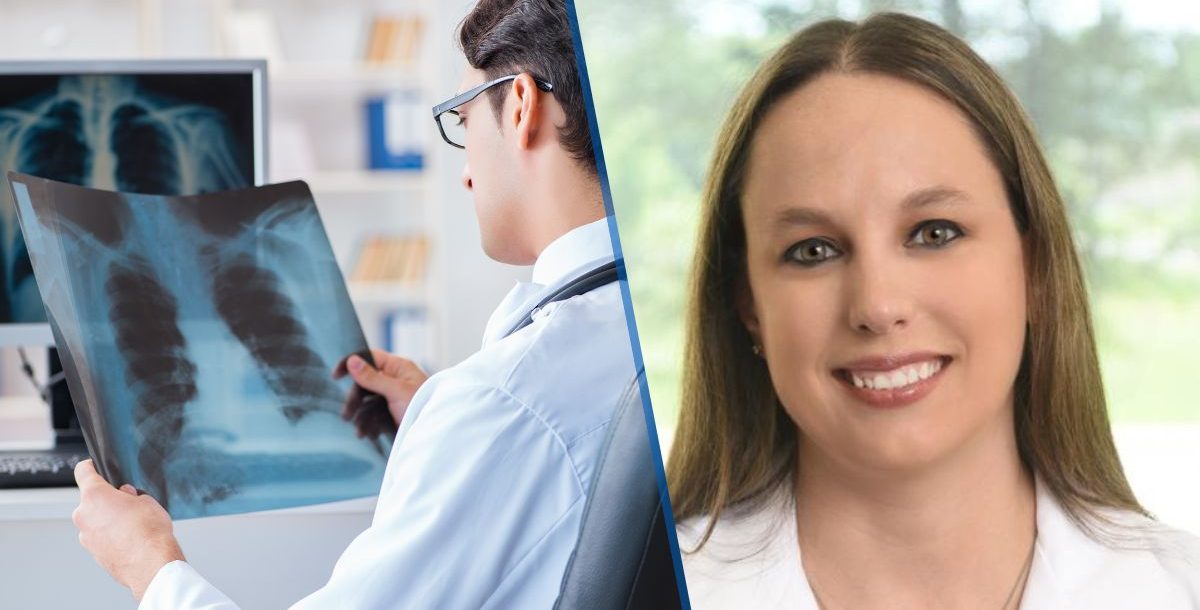Lung cancer remains a significant global health problem accounting for a substantial number of cancer-related deaths each year. In recent years, lung cancer screening guidelines have evolved to identify high-risk individuals and help lead to diagnoses in earlier stages.
The importance of early detection cannot be overstated, as it significantly improves outcomes for those diagnosed with this deadly disease. However, in order to have screening for lung cancer, you have to meet the requirements.
Understanding lung cancer risk factors
Before delving into lung cancer screening guidelines, it’s crucial to understand the risk factors associated with lung cancer. To be considered a candidate for a lung cancer screening, your doctor will ask you questions about your smoking history and habits in order to determine your risk level.
Smoking is the most prominent risk factor. There is also strong correlation between how long you smoked and how often, which may affect your likelihood of developing lung cancer. Other risk factors include exposure to secondhand smoke, occupational exposure to carcinogens such as asbestos and radon gas, a family history of lung cancer and a personal history of certain respiratory diseases.
How do I know if I need a lung cancer screening?
In November of 2023, the American Cancer Society (ACS) updated its lung cancer screening guidelines to expand eligibility for screening tests. The guidelines recommend yearly screenings for people who:
- Are 50 to 80 years old
- Smoke or used to smoke
- Have a 20-year or greater pack history
Pack-year history is calculated by multiplying the number of packs of cigarettes per day by the number of years smoked. For example, smoking one pack per day for 20 years equals a 20-pack-year smoking history.
The recommended annual screening test is a low-dose computed tomography scan, which is also called a low-dose CT scan, or LDCT.
The new guidelines eliminate the “years since quitting” requirement – previously, the above guidelines also made it necessary that patients quit smoking at least 15 years before if they are not current smokers. This makes it easier for people who quit smoking more recently to still get screened for lung cancer.
“Lung cancer screening is important to try to find cancer early,” Molly Howsare, DO, a pulmonary and critical care physician in our Youngstown market, says. “Most people do not have symptoms while lung cancer is still in its early stages.”
It’s important to note that these new guidelines are from the American Cancer Society. The U.S. Preventive Services Task Force (USPSTF), whose recommendations the Centers for Disease Control and Prevention (CDC) follow, still maintains the requirement that former smokers must have quit at least 15 years ago to qualify for screening.
Lung cancer screening guidelines are still subject to change further. You should consult with your health care providers for the most up-to-date and personalized recommendations.
Benefits and risks of lung cancer screening
Lung cancer screening with LDCT scans has shown promising results in detecting cancer at an earlier, more treatable stage, thereby improving survival rates.
“The sooner that you find lung cancer, the easier it is to treat, and the better the outcomes,” Dr. Howsare says.
However, it’s important to acknowledge the potential harms associated with screening, including false positives that can lead to unnecessary invasive procedures, exposure to radiation and the psychological impact of a cancer diagnosis. This is why doctors use screening only for people who are at a high risk for lung cancer.
What to think about when considering a screening test
While patients have to meet the requirements of lung cancer screening, the decision-making process is often a collaborative one between them and their health care provider. This approach allows patients to make informed decisions about the potential benefits and risks of screening, considering the individual’s overall health, risk factors and personal preferences.
Outside of screening tests, our Youngstown market offers a tobacco treatment program to help people quit smoking, which is the biggest risk factor for lung cancer. If you don’t qualify for a screening test or choose not to get one right now, it’s never a bad time to stop smoking.
Dr. Howsare says that while most people quit smoking during their first time through the five-week treatment program, not everyone does. However, many of them try again and are successful in quitting.
“What I tell people is that if you quit smoking and then you have a slip up, then quit again the next day. The importance is that we want you to keep quitting until it sticks,” Dr. Howsare says.
When to talk with your provider
Lung cancer screening guidelines play a crucial role in identifying individuals at high risk and enabling early detection, ultimately improving outcomes for those diagnosed with this devastating disease.
As research continues to evolve, staying informed about the latest recommendations is essential for both health care providers and individuals. If you meet lung cancer screening guidelines or have questions about the process, talk with your health care provider about your options.
Learn more about lung cancer as well as the cancer care services we provide at Mercy Health.






